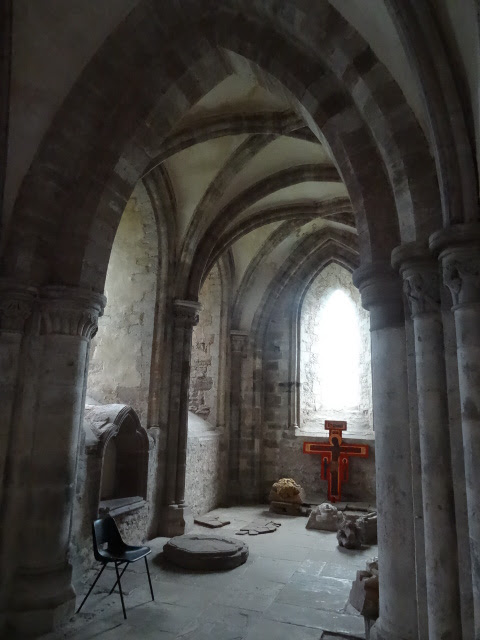Another stunner indeed, lucid and numinous, filled on our visit with the soft afternoon light of summer's ending. An austere Cistercian house, founded in 1147 by Robert Fitzharold, abandoned after Dissolution and then brought back to life in the reign of Charles I. The good Lord Scudamore was responsible and the work undertaken by John Abel, the 'King's Carpenter', from Hereford. The church, then, a wonderful combination of Early English Gothic and 'Artisan Mannerist' furnishings. The latter making this church a highly important example of a Laudian church interior. In addition the building has never undergone a thorough restoration and is therefore full of atmosphere and texture, although the liturgical arrangements have been altered from the intention of the 17th century restorers.
What survives of the monastic church are the transepts and the choir. The nave and virtually all the monastic buildings have disappeared. From the scanty remains of the former it can be deduced that it was built in the Norman style. The transepts and western parts of the choir are earliest Gothic while the sanctuary and the retrochoir are full fledged and sophisticated Early English, and where there is perhaps a slackening of the Cistercian austerity. The retrochoir in particular is endowed with a fluent complexity. In all a rather French flavour to the architecture too. Like Kilpeck it is pretty superlative stuff. After its Laudian restoration there have been no later furnishings of note and very little stained glass, which, on reflection, is as it should be. The contrast to the exterior could not be more marked - the architecture is particularly blunt and work-a-day with rubble walls of local red sandstone; from the west the transept looks like some enormous barn, and no attempt, rightly, has been made to rebuild the line of gables that decorated the aisles and retrochoir. Even the later bell tower (Cistercians, to begin with at least, eschewed such frivolities) keeps faith.






















No comments:
Post a Comment